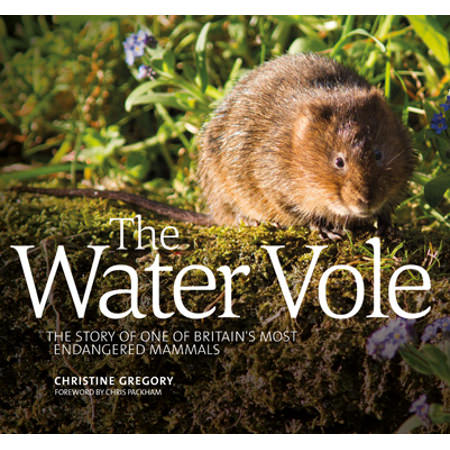“We can learn to be invisible, to listen and watch, and by doing so gain some of the greatest rewards it is possible to have in our rushed and crowded lives – to see a wild animal living its life in peace.”
Christine Gregory, The Water Vole: The Story of One of Britain’s Most Endangered Mammals
Author Christine Gregory has spent several years studying Derbyshire’s water vole population, their behaviour and habitats. This is our review of her new
book, “The Water Vole: The story of one of Britain’s most endangered mammals”.
Opening with a cheerful foreword by naturalist, television presenter, photographer and author, Chris Packham, the book explores everything, in his words,“voley”.
Christine Gregory has taken the time to study a population of water voles in Derbyshire. The story of the water vole provides a welcome pause in our
rushed and crowded lives. Through patience and observation, Christine has managed to take a wonderful array of water vole photographs, providing a
unique view of their lives. Although some chapters are focused on Derbyshire where the author originates, information is provided on the species as
a whole including life history, legal protection, reasons for its decline and opportunities to reverse this.
This book, whilst briefly touching on water voles and the law, will undoubtedly have a broader appeal than a scientific text book. A brief discussion of
the possible mitigation measures to counteract potential impacts from development is provided. I noticed a sense of scepticism when Christine discusses
the role of the planning system in ensuring the species’ legal protection is adequately met when faced with big development. However, the positive
impact of the Water Framework Directive on Britain’s wetland ecosystems is adequately reflected.
I particularly enjoyed the history of the water vole in Britain as it provided a fascinating insight into the species through the ages, and how human practices
have affected it, including efforts to destroy the water vole population entirely – quite a contrast to modern-day attempts to preserve the well-loved
species.
The book ends optimistically. Small changes in how we interact with our wetland ecosystems can make big changes to this, and other species which populate
similar habitats. As a small mammal, the water vole has evolved to be able to expand its population rapidly and, provided we give them adequate opportunities,
including habitat connectivity, the decline of the water vole can be reversed.
The Water Vole, The Story of One of Britain’s Most Endangered Mammals is available now from Vertebrate Publishing.











